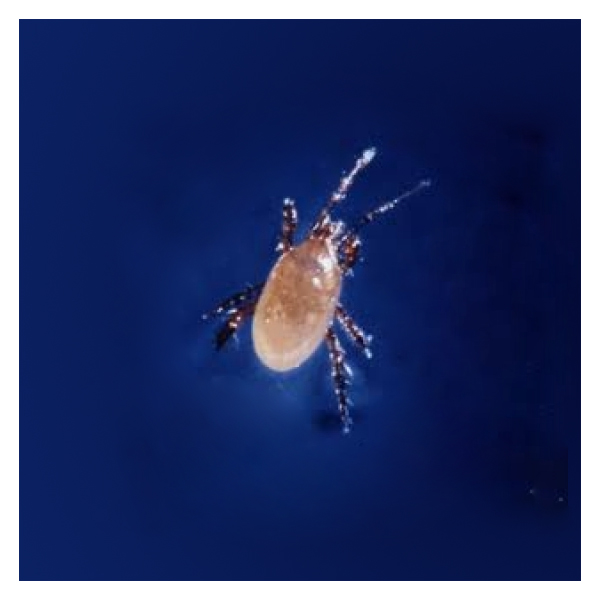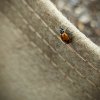If your a prime member you'll save on the overnight shipping going with the above link. They ship strictly on Tuesdays anyways with an ice pack in there and my order seemed to be intact, hard to tell, seems like I just bought saw dust..lol, did see one tiny little critter moving around and I mean tiny. Enough in there to spread around across eight 7gallon pots. Hoping the BTI I poured in there (prior to adding the miles) won't do anything to them and I did remove half of the yellow traps in there. Feeling organic-like at the moment, dropped some red worms in the pots 5 days ago and now miles..

Thinking I'll dump some more miles in there (two weeks from now) for good measure.
View attachment 5061790
copy n pasted from here---> https://www.biconet.com/biocontrol/infosheets/hypoaspisBulletin.html
Target Pest:
Primarily for control of fungus gnats (Bradysia spp.) and for supplemental control of western flower thrips (Frankinella occidentalis).
Description:
Hypoaspis is a native species of soil-dwelling mites which feed on small insects and mites. Adults are tan in color and less than 1 mm long. Hypoaspis are used primarily to control young larvae of fungus gnats in the soil or planting media. They also help control soil stages of thrips and may account for up to 30% of thrips control. Hypoaspis does not control shore flies of moth flies, but will feed on other soil organisms such as springtails and root mealybugs. They have been used successfully in bedding and potted plant production, seedling and cutting propagation and poinsettia stock. Hypoaspis adapts well to the various growth media and capillary mats used in plant production, but do not survive freezing of flooding conditions.
Product information:
Hypoaspis is supplied in a pasteurized peat/bran mixture in 1 liter (1 qt) containers with a shaker lid for distributing the mixture over the soil. There are 15,000 to 20,000 predators per liter or about 15 to 20 predators per cc. The mixture may also contain another species of mite as a food source for the predators. To check the product for live mites, inspect under 10-15X magnification. The predators are tan and move quicly compared to the food source mites, which are white or translucent and move slowly.
The predators should be applied as soon as received. Do not refrigerate. If necessary, containers can be held, stored on their side out of direct sunlight, at 16-21°C (60-70°F) for up to 7 days.
Release Rates:
Hypoaspis is most effective when appied before fungus gnat population becomes established or while numbers are still low (below 10/trap/week). One application of Hypoaspis per crop cycle is usually sufficient, if used early in the season.
Soil Culture: Apply 1 L/100 sq. m (100 sq. ft.) to the soil at the time of planting. Be sure to treat wet, exposed area os soil, where fungus gnats are likely to breed.
Sawdust bag or Rockwool culture: Apply 8-16 L/hectare (3-6 L/acre) to at least on eplant in every bag or rockwool slab. Vegetable transplants may be treated 1 week before planting out.
Pot Culture: Apply 1L/200 sq. m (2000 sq. ft.) of bench area. Treat the floor of the greenhouse if it provides conditions for fungus gnats to breed and occasionally treat the perimeter of the greenhouse.
It is not necessary to apply mites to every flat of bedding plants if applications are done early, at full rate, to allow them time to spread to all flats. Mites can also be applied to propagation media before striking cuttings.
Life span:
The complete life cycle takes about 18 days at 20°C (68°F). The sex ratio is equal, 1:1 females to males. Hypoaspis eggs hatch in 2 to 3 days into young numphs. Each Hypoaspis consumes 1 to 5 prey per day. It can also survive as a scavenger, feeding on algae and plant debris. Populations will naturally fluctuate throughout the growing season.
Strategic Considerations:
Do not mix predators into the growth media before potting because they do not survive. Apply Hypoaspis shortly after planting and before fungus gnat levels reach more than 20 adults/trap/week. To control high numbers of fungus gnats, use Hypoaspis can be integrated with insect parasitic nematodes (e.g., Steinernema spp.) and Bacillus thurinigiensis israelensis (BTI) (Vectobac¨), both of which control the larval stage of fungus gnats.
In general, do not apply Hypoaspis to soil that has been treated with lime or pesticides (particularly soil treated with diazinon). It is likely that foliar sprays are less harmful than soil drenches, depending upon how much pesticide reaches the soil surface. Fungicide drenches containing benzimidazoles are known to reduce reproduction of Hypoaspis. Microbial pesticides, such as Vectobac¨ (BTI) will not harm Hypoaspis.












